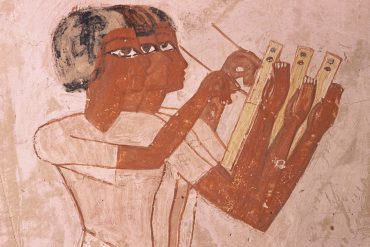Recent years have seen an increased emphasis on authentic assessments in business courses, designed to mirror the real-world tasks that graduates face in the workplace. The impact of COVID-19 on education and work practices has put even more emphasis on authentic assessment structures that can be implemented online and in hybrid formats. In the following sections, we detail the design and implementation of authentic assessment items in SIEN5001, the foundation unit in the new Strategy, Innovation and Management specialisation within the Master of Commerce.
Unit overview
SIEN5001 introduces students to essential knowledge, frameworks and tools to manage strategically and innovatively. This new unit had roughly 75 students enrolled in the first semester of 2021. Students learn introductory management skills and capacities, including strategy and innovation frameworks and theories applied to real business cases. There is a focus on responsible and ethical business management, and the managerial mindsets required to think strategically and innovatively in uncertain times. The unit was delivered in a blended mode through a mix of self-paced weekly modules and participatory tutorials. Due to Covid-19, the tutorials were a mix of Zoom and Hybrid classes. The unit has been developed by the Strategy, Innovation and Entrepreneurship discipline in the Business School in collaboration with an educational developer, learning designer and media producer as part of the Connected Learning at Scale (CLaS) project. CLaS aims to transform the learning experience of large cohort units in the Business School with developments based around three core pedagogical principles of active information engagement, connected participation and authentic assessment with feed forward.
Rationale for assessment design
The assessment design of this new unit was guided by the CLaS principle of authentic assessment and feed forward. While final exams have been the norm in the Business School, both the principle of authentic assessment, as well as the desire to avoid managing online exams, guided us towards alternative assessment types. We wanted to embed critical thinking, self-reflection, and ethical awareness to support students’ development of key graduate qualities. We also wanted to give students the opportunity to work with authentic business cases and build their teamwork and peer feedback skills.
Assessment details
The assessment structure in the unit includes an industry case report where students worked individually to create a strategic plan for ResMed, an Australian medical device company. We collaborated with the Library who developed a great online video on research skills, tailored to students’ program level and discipline. For the second assessment, students formed teams on Canvas, and worked in small groups to apply an innovation framework analysis to the same case organisation. Students also undertook a peer review process where they gave feedback and rated each other’s contribution to effective team processes. We piloted a new learning tool called Feedback Fruits integrated into Canvas to facilitate this process, with students first giving formative feedback and then summative feedback to each other against a set of criteria, which contributed to a small portion of their overall grade.
Instead of a final exam, we developed a critical reflection essay where students brought together learnings from the semester to reflect on their developing managerial identities in relation to their own capacities and broader work and study contexts. We drew on the 4Rs reflection framework (a modification of the 5Rs framework) to guide students’ reflective writing (Bain et. al., 2002). The unit also included a participation mark for active engagement in tutorials. All assessments included detailed rubrics on Canvas to make expectations clear to students and facilitate specific feedback.
Assessment reflection
One of our main takeaways was the need to ‘scaffold’ both critical self-reflection and peer review. While we thought we had provided enough resources for students to complete these tasks, from post-course feedback we learned that students can sometimes be uncomfortable with these kinds of assessment types. In the case of reflection, students might find the concept vague or abstract if they haven’t had prior experience with this form of assessment. Allowing students to draw on their own work and study experiences proved beneficial in connecting the reflective aspect of the assignment to the development of their own managerial identities. In the case of peer review, we learned that some students may feel uncomfortable giving negative feedback to one another, and might feel unsure how to discuss this feedback to develop solutions to any process issues. Students may also have little experience constructing and delivering actionable or appreciative feedback. We found that configuring and utilising Feedback Fruits so that students could respond to the feedback they received from their peers helpful here, in that a dialogue was created between students regarding improving their teamworking abilities based on feedback given and received.
Authentic assessment in SIEN5001: going forward
As we iteratively develop this assessment design, we’d like to provide more support for students in developing their reflective and feedback capacities. We could:
- Introduce more resources to support reflective writing, including annotated examples of weaker and stronger work. We could also design tutorial activities to introduce and engage students with this assignment — and the concept of critical reflection itself — earlier in the semester.
- Scaffold student peer review by introducing the process in the early stages of the course. This will give us a chance to facilitate a discussion at the outset about the role and value of giving and receiving peer feedback — a key professional skill in management courses. We could give students more opportunities to practice this kind of feedback in low stakes environments, such as in an ungraded tutorial activity.
Credits: This unit has been co-designed by Paul Finn, Leanne Cutcher, Tim Mahlberg, Bernhard Resch, jessica tyrrell, Thea Werkhoven and Eileen Huang.





